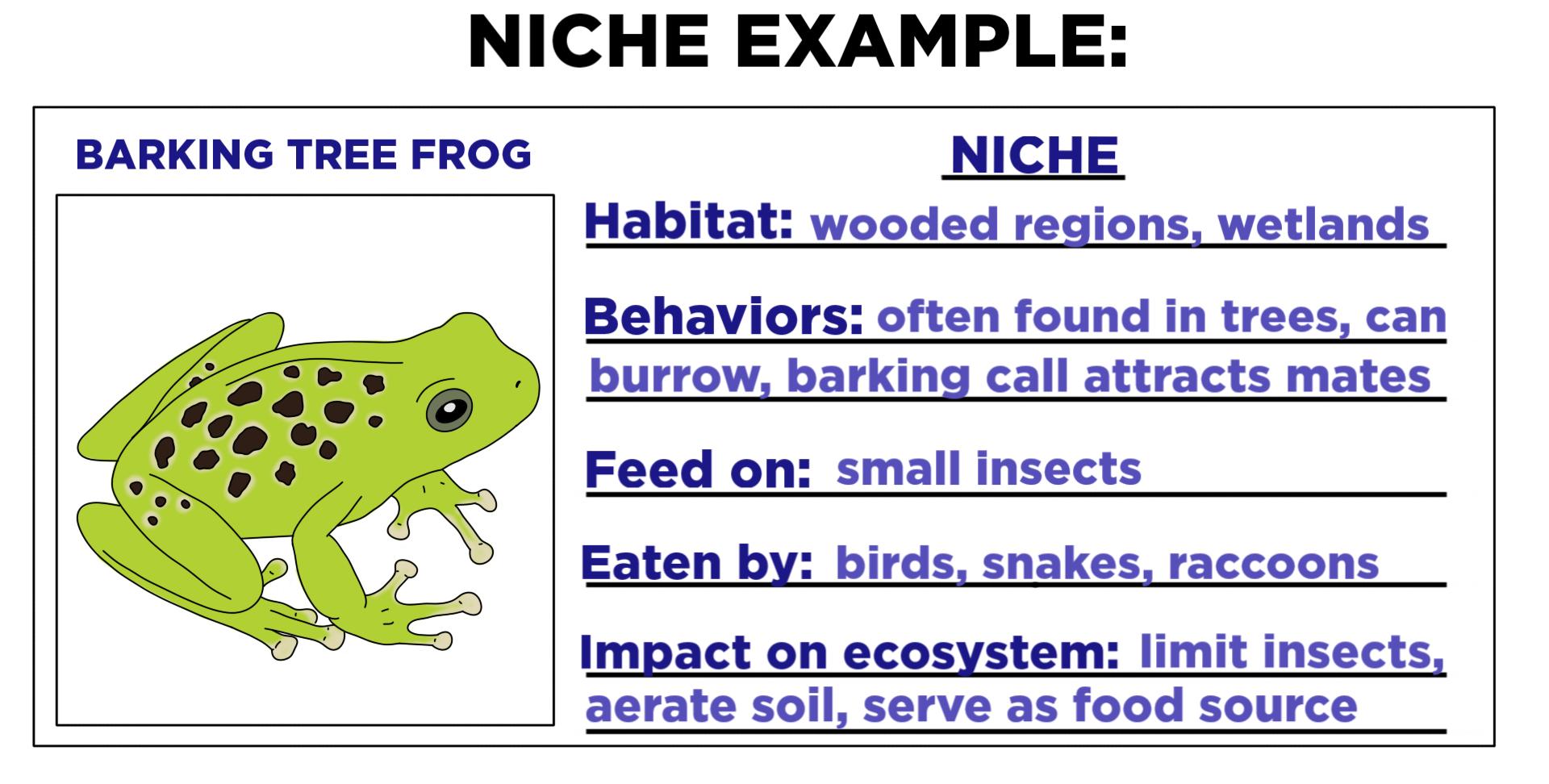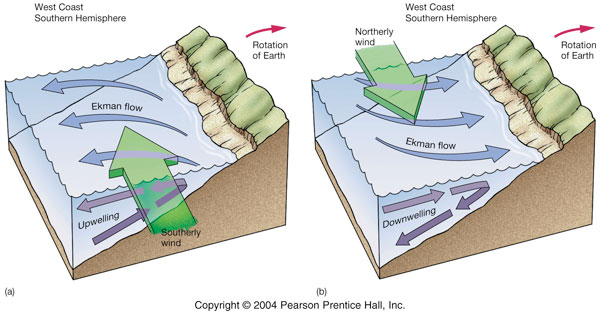Static Quiz 21 June 2022
Quiz-summary
0 of 5 questions completed
Questions:
- 1
- 2
- 3
- 4
- 5
Information
Static Quiz 21 June 2022 for UPSC Prelims
You have already completed the quiz before. Hence you can not start it again.
Quiz is loading...
You must sign in or sign up to start the quiz.
You have to finish following quiz, to start this quiz:
Results
0 of 5 questions answered correctly
Your time:
Time has elapsed
You have reached 0 of 0 points, (0)
Categories
- Not categorized 0%
- 1
- 2
- 3
- 4
- 5
- Answered
- Review
- Question 1 of 5
1. Question
Which one of the following terms describes not only the physical space occupied by an organism, but also its functional role in the community of organisms?
CorrectAns;- b) Ecological Niche
Explanation;-
NICHE;-
Habitat and Niche are an important part of an ecosystem. They help in describing the interaction of an organism with its environment, including both biotic and abiotic agents. Ecology is the study of these interactions.
A niche defines a particular role played by organisms in an ecosystem, i.e. profession. Niche is a species-specific and it supports only a single species. Niche is a subset of habitat.
According to the competitive exclusion principle, no two species can occupy the same niche in the same environment for a long time.
Ecological NICHE;-
The term which not only describes the physical space occupied by an organism, but also its functional role in the community of organisms is called ecological niche
Types of Niche are as follows;-
1) Habitat Niche, 2) Food Niche, 3)Reproductive Niche, 4)Physical and Chemical Niche.
 Incorrect
IncorrectAns;- b) Ecological Niche
Explanation;-
NICHE;-
Habitat and Niche are an important part of an ecosystem. They help in describing the interaction of an organism with its environment, including both biotic and abiotic agents. Ecology is the study of these interactions.
A niche defines a particular role played by organisms in an ecosystem, i.e. profession. Niche is a species-specific and it supports only a single species. Niche is a subset of habitat.
According to the competitive exclusion principle, no two species can occupy the same niche in the same environment for a long time.
Ecological NICHE;-
The term which not only describes the physical space occupied by an organism, but also its functional role in the community of organisms is called ecological niche
Types of Niche are as follows;-
1) Habitat Niche, 2) Food Niche, 3)Reproductive Niche, 4)Physical and Chemical Niche.

- Question 2 of 5
2. Question
In the context of ecosystem productivity, marine upwelling zones are important as they increase the marine productivity by bringing the:
1) decomposer microorganisms to the surface.
2) nutrients to the surface.
3) bottom-dwelling organisms to- the surface.Which of the statements given above is/are correct?
CorrectAns;- b) 2 Only
Explanation;-
Since phytoplankton form the base of marine food webs, the world’s most productive fisheries are located in areas of coastal upwelling that bring cold nutrient rich waters to the surface. On the other hand, in zones of coastal downwelling, the surface layer of warm, nutrient-deficient water thickens as water sinks.
Below image of Upwelling and Downwelling of Nutrients;-
Upwelling is a process in which currents bring deep, cold water to the surface of the ocean. Upwelling is a result of winds and the rotation of the Earth.
Downwelling is a kind of reverse upwelling. Instead of deeper water rising up, warm surface water sinks down. Upwelling and downwelling patterns often alternate seasonally.
Example :- Regions around the Grand Banks of Newfoundland are the world’s largest fishing grounds.Mixing of warm Gulf Stream and cold Labrador currents make the region the most productive fishing ground on earth.
 Incorrect
IncorrectAns;- b) 2 Only
Explanation;-
Since phytoplankton form the base of marine food webs, the world’s most productive fisheries are located in areas of coastal upwelling that bring cold nutrient rich waters to the surface. On the other hand, in zones of coastal downwelling, the surface layer of warm, nutrient-deficient water thickens as water sinks.
Below image of Upwelling and Downwelling of Nutrients;-
Upwelling is a process in which currents bring deep, cold water to the surface of the ocean. Upwelling is a result of winds and the rotation of the Earth.
Downwelling is a kind of reverse upwelling. Instead of deeper water rising up, warm surface water sinks down. Upwelling and downwelling patterns often alternate seasonally.
Example :- Regions around the Grand Banks of Newfoundland are the world’s largest fishing grounds.Mixing of warm Gulf Stream and cold Labrador currents make the region the most productive fishing ground on earth.

- Question 3 of 5
3. Question
Which one of the following is the correct sequence of ecosystems in the order of decreasing productivity?
CorrectAns;- C) Mangroves, grassland, Lakes ,oceans
Explanation;-
So the correct sequence of ecosystem in the order decreasing productivity is: Mangroves > Grasslands > Lakes > Oceans.
Productivity is the rate of biomass production. In other words, ecosystem productivity represents the total amount of energy (organic matter) fixed or stored by the autotrophs per unit time in the ecosystem.
Productivity = production/unit area/unit time
Productivity is divided in to two, primary productivity and secondary productivity
The average ocean productivity is about 50 grams carbon per square meter per year.
Average land productivity is 160 grams carbon per square meter per year.The productivity of the open ocean (ocean away from coasts) is comparable to desert production.
The mangroves are highly ‘productive’. Hence C is the answer
IncorrectAns;- C) Mangroves, grassland, Lakes ,oceans
Explanation;-
So the correct sequence of ecosystem in the order decreasing productivity is: Mangroves > Grasslands > Lakes > Oceans.
Productivity is the rate of biomass production. In other words, ecosystem productivity represents the total amount of energy (organic matter) fixed or stored by the autotrophs per unit time in the ecosystem.
Productivity = production/unit area/unit time
Productivity is divided in to two, primary productivity and secondary productivity
The average ocean productivity is about 50 grams carbon per square meter per year.
Average land productivity is 160 grams carbon per square meter per year.The productivity of the open ocean (ocean away from coasts) is comparable to desert production.
The mangroves are highly ‘productive’. Hence C is the answer
- Question 4 of 5
4. Question
Which one of the following is the process involved in photosynthesis?
CorrectAns;- b) Free energy is converted into potential energy and stored
Explanation;-
Photosynthesis, the process by which green plants and certain other organisms transform light energy into chemical energy. During photosynthesis in green plants, light energy is captured and used to convert water, carbon dioxide, and minerals into oxygen and energy-rich organic compounds.IncorrectAns;- b) Free energy is converted into potential energy and stored
Explanation;-
Photosynthesis, the process by which green plants and certain other organisms transform light energy into chemical energy. During photosynthesis in green plants, light energy is captured and used to convert water, carbon dioxide, and minerals into oxygen and energy-rich organic compounds. - Question 5 of 5
5. Question
In the grasslands, trees do not replace the grasses as a part of an ecological succession because of
CorrectAns;- C) Water limits and fire
Explanation;-
In the grasslands, trees do not replace the grasses as a part of an ecological succession because of Water limits and fire.
Two factors for evolution of temperate grassland biome, i) Extreme continental climate with limited supply of water due to low rainfall, ii) human activities mainly burning of vegetation.”IncorrectAns;- C) Water limits and fire
Explanation;-
In the grasslands, trees do not replace the grasses as a part of an ecological succession because of Water limits and fire.
Two factors for evolution of temperate grassland biome, i) Extreme continental climate with limited supply of water due to low rainfall, ii) human activities mainly burning of vegetation.”





